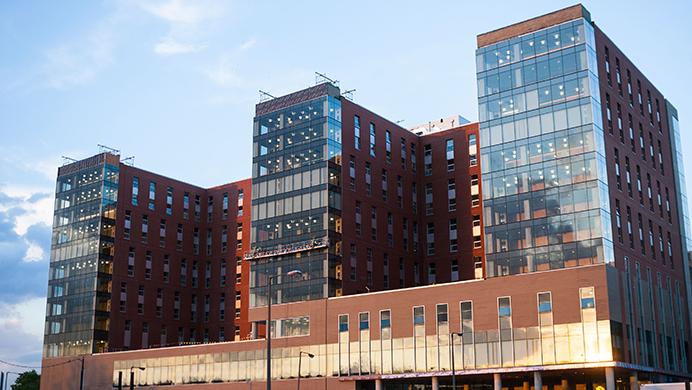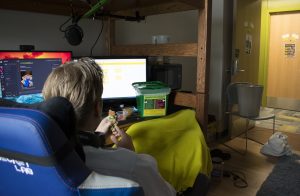Catlett Hall achieves gold standard in sustainable building
Catlett Hall is the latest university building to achieve a gold-level LEED certification.
September 7, 2018
Catlett Residence Hall is the latest University of Iowa building to be recognized as a leading structure in sustainable, eco-friendly construction.
This summer, the residence hall, opened in 2017, earned the Leadership in Energy and Environmental Design program’s Gold Certification.
LEED certification is a third-party, nationally recognized benchmark developed by the U.S. Green Building Council that validates the sustainability and eco-friendliness of facilities.
In a LEED Gold building, 25 percent of the installed materials have a high recycled content and 33 percent of the materials are harvested, extracted, and manufactured within a 500-mile radius of the job site. The construction waste-management plan resulted in 76 percent of waste to be diverted from landfills.
After the building’s construction, Catlett continues to save energy and thousands of dollars. Its appliances, such as laundry and dishwashing machines compounded with low-flow plumbing fixtures, result in annual water savings of 43 percent.
Beckwith Boathouse was the UI’s first LEED building, certified LEED Gold in 2009. Now, there are 16 LEED facilities on campus: two platinum, 11 gold, and three silver.
Wendy Moorehead, the strategic communication manager for UI Facilities Management, said in an email to The Daily Iowan that the university is committed to sustainability through the incorporation of green principles in the design and construction of new buildings and major renovation projects to reduce stormwater runoff, daylight harvesting, using local and recycled materials wherever feasible, and including a variety of energy-efficient strategies throughout buildings.
“Going forward, the UI is committed to sustainability in building design and construction and is currently exploring other processes and programs to continue to support that goal,” Moorehead said in an email to the DI.
In Catlett, some of the energy-efficient strategies include using central air rather than air-conditioning units for every room and controlled lighting that can switch itself off if there is no movement in a room for a certain amount of time.
Sophomore Sawyer Breitsprecher said those kinds of dorm features send a message as well as conserve energy, and Catlett is one of the few residence halls to do it.
“They really try to promote the eco-friendly environment and help residents develop those habits,” Breitsprecher said. “It’s really important to practice eco-friendly habits and give back to the environment, especially with all the talk of global warming.”
Sophomore Kelsey Vandenberg said Catlett is considerably eco-friendlier than her last residence hall with such features as specialized “green” outlets that conserve energy and higher abundance of natural lighting in spaces such as student lounges.
“To me, sustainability means using our resources responsibly so that our kids and our grandchildren, even generations after them, will have the same resources we have and the same, if not better, quality of life than we have,” Vandenberg said in an email to the DI.





